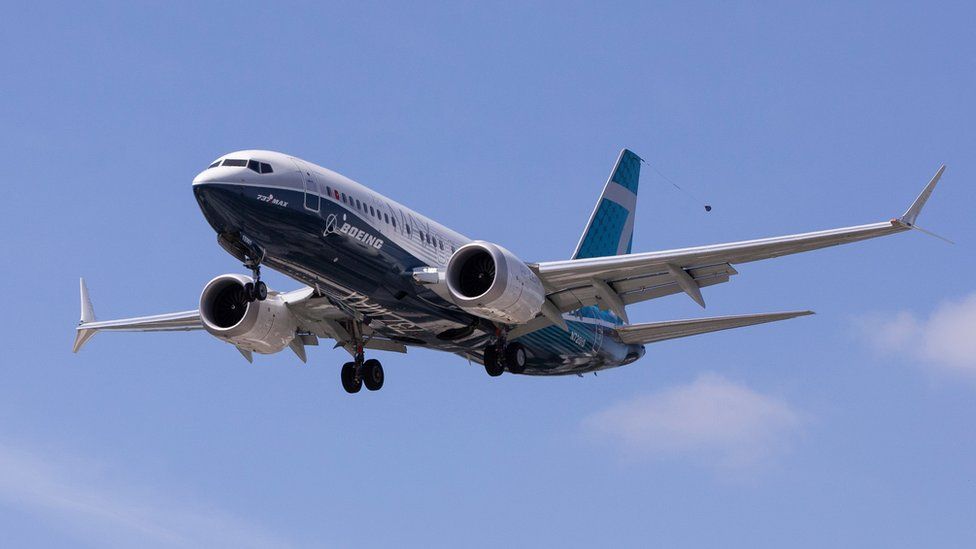
The airplane maker called for the inspections after an international operator discovered a bolt with a missing nut, the Federal Aviation Administration (FAA) said. Boeing has asked airlines to inspect all of their 737 Max jets for a potential loose bolt in the rudder system after an airline discovered a potential problem with a key part on two aircraft.
An airplane’s rudder is used to control and stabilize the aircraft while in flight and an unnamed international airline found a bolt with a missing nut in a rudder-control linkage mechanism while conducting routine maintenance – and it found a similar bolt that wasn’t properly tightened in a yet-to-be delivered plane.
“The issue identified on the particular airplane has been remedied,” Boeing said.
“Out of an abundance of caution, we are recommending operators inspect their 737 Max airplanes and inform us of any findings. We informed the FAA and our customers and will continue to keep them aware of the progress.”
The FAA said it was “closely monitoring targeted inspections of Boeing 737 Max airplanes to look for a possible loose bolt in the rudder control system”.
Boeing has recommended that the checks – which only take around two hours – take place within the next two weeks.
Any problems involving a faulty rudder would likely be identified in a pre-flight check, as crews routinely examine the rudder system before flying, Boeing said.
Anthony Brickhouse, an air safety expert at the Embry-Riddle Aeronautical University, said that airlines “need to take it seriously”.
“But as a member of the flying public, I don’t see this as an issue to be concerned about,” he told Reuters news agency.
Boeing shares were down 1% in midday trade.
Boeing’s 737 Max was cleared to fly passengers again by US regulators in 2020 having been grounded for 20 months worldwide after two catastrophic accidents killed 346 people in Ethiopia and Indonesia.
“The issue identified on the particular airplane has been remedied,” Boeing said.
“Out of an abundance of caution, we are recommending operators inspect their 737 Max airplanes and inform us of any findings. We informed the FAA and our customers and will continue to keep them aware of the progress.”
Boeing has recommended that the checks – which only take around two hours – take place within the next two weeks.
Any problems involving a faulty rudder would likely be identified in a pre-flight check, as crews routinely examine the rudder system before flying, Boeing said.
Anthony Brickhouse, an air safety expert at the Embry-Riddle Aeronautical University, said that airlines “need to take it seriously”.
“But as a member of the flying public, I don’t see this as an issue to be concerned about,” he told Reuters news agency.
Boeing shares were down 1% in midday trade.
Boeing’s 737 Max was cleared to fly passengers again by US regulators in 2020 having been grounded for 20 months worldwide after two catastrophic accidents killed 346 people in Ethiopia and Indonesia.
Investigations focused on an automated flight-control system that pushed the nose of the plane down based on faulty sensor readings. Boeing did not tell pilots and airlines about the system until after the first crash.
The FAA, which also faced criticism for the way it approved the Max jets prior to these deadly crashes, has since moved to provide a more detailed certification process for large planes and required safety disclosures.
737 max A320 a320 systems A330 accident AIRBUS Airbus A321 Aircraft aircraft accident aircraft accidents aircraft crash Aircraft Engine aircraft engineering aircraft hydraulic system failure aircraft landing gear aircraft Maintenance Aircraft Seat aircraft seats Aircraft Seats with airbads aircrash airlines Airlines aircraft collapsed at Los Angeles Angle Of Attack (AOA) protection aviation b737 B737 max b747 Bank angle protection Birdstrike boeing Certificate of Airworthiness cockpit Collision crash firefighters gas turbine Gas turbine engine incident landing Landing gear midaiir mid air incidents pilot systems Type certificate
